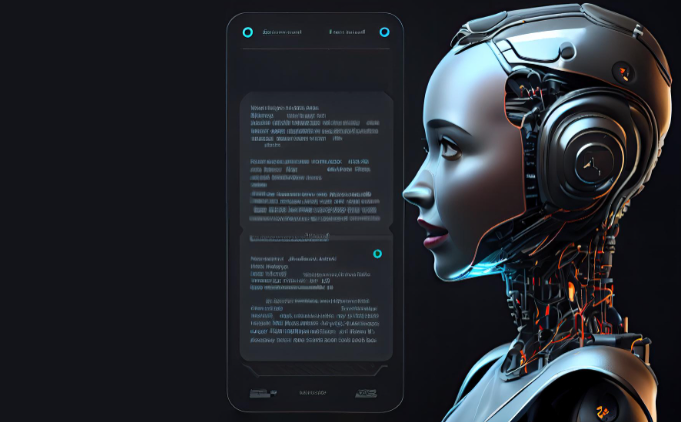Insurance AI: Rapid Risk Modeling and Underwriting Strategy via HVHI
For centuries, the insurance industry has been the silent engine of the global economy. It is the original "data science" business, built on a foundation of statistics, actuarial tables, and the sober, long-term assessment of risk. It is an industry that, by its very nature, values certainty over speed.

But the world has changed, and the "long-term" is no longer what it used to be.
The 100-year flood is now the 3-year flood. A line of malicious code (a cyber-attack) can create more financial damage than a hurricane. A global pandemic can rewrite mortality tables in six months. The foundational assumption of insurance—that the future will look roughly like the past—is fundamentally broken.
This has created a crisis. The industry's "slow and steady" model is no longer just a "feature"; it's a fatal "bug." Insurers are trapped in a "Low-Velocity, Low-Impact" paradox. Their risk models are often years old, their core technology is decades old, and their customer-facing processes are universally frustrating. They are losing their best customers to nimble "InsurTech" startups and losing their shirts to new, un-modeled risks.
To survive, the industry doesn't just need "AI." It needs a new operating system. It needs a strategy that embraces speed and precision. It needs a way to rapidly model new risks and deploy new underwriting strategies in weeks, not decades. This is the High-Velocity, High-Impact (HVHI) model—a blueprint for turning the slow, analogue insurer into a fast, predictive, and resilient digital engine.
Part 1: The Diagnosis: The "Low-Velocity, Low-Impact" Insurer
Before we can build a new model, we must be brutally honest about why the old one is failing. The insurance industry is, by design, the most Low-Velocity industry in the world.
The "Velocity Killers": Why Insurance is So Slow
-
The "Actuarial Mindset" vs. "Model-Drift": The actuarial profession is built on a culture of 100% certainty. A new risk-model (e.g., for pricing auto insurance) is a 3-year project. It must be built, tested, back-tested, and filed with 50 different state regulators. The problem? By the time the "perfect" 3-year-old model is deployed, the world has changed. "Model-drift"—the gap between the model's predictions and new reality—is rampant.
-
The Mainframe Anchor: The beating heart of most global insurers is not a modern cloud. It is a 40-year-old mainframe running COBOL. This "Policy Administration System" (PAS) is a fortress. It is stable, but it is also a "Low-Velocity" prison. Getting data out for an AI model, or pushing a new price back in, is a 12-month, multi-million dollar IT project.
-
The Human-in-the-Loop (for Everything): The entire value-chain is manual. A commercial underwriter spends 80% of their time gathering data (reading 50-page PDFs, looking up property records) and 20% analyzing it. A claims adjuster must physically drive to a site, take photos, and manually file a report. This is unscalable, expensive, and slow.
The "Impact Killers": Why the Slow Model is Failing
-
Adverse Selection (The "Dumbest Price" Loses): In a digital marketplace, customers can get 10 quotes in 30 seconds. The "winner" is often the one with the wrong price. If your competitor's AI-driven model has already identified (and re-priced) a new risk (e.g., "social inflation" in Texas), but your 3-year-old model hasn't, you will offer a "cheaper" price. You will "win" 100% of the bad risk. This is "adverse selection," and it is how insurers go bankrupt.
-
Claims "Leakage" (The Profit-Killer): "Leakage" is the money paid out in claims due to inefficiency, fraud, or error. A slow, manual, paper-based claims process is a magnet for leakage. It's adversarial for good customers (who have to wait 6 weeks for a check) and easy to game for fraudsters.
-
The Historical-Data Trap: Your models are perfectly priced... for 2019. They know nothing about post-pandemic driving-habits, new cyber-attack vectors, or the accelerated risk of wildfires. You are flying a 747 in a storm by looking at a map of last year's weather.
Part 2: The "High-Velocity" (HV) Engine: Building the Agile Insurer
The HVHI model is not about being "reckless." It is about building a system for safe, rapid iteration. It's about building the "engine" that allows you to "move fast" in a highly regulated world.
1. The "Wrapper" Strategy: Bypassing the Mainframe The #1 rule of HVHI is: You do not replace the 40-year-old mainframe. That is a 10-year, $500-million "transformation" project that will fail.
Instead, you "wrap" it. You build a modern, lightweight API (Application Programming Interface) layer around the legacy system. This "wrapper" acts as a universal translator. It has one job: to liberate the policy and claims data in real-time. This is the single most important, cost-effective, and high-velocity move an insurer can make. It "decouples" your fast AI-tools from your slow legacy-core.
2. The New Data "Fuel": Real-Time & Unstructured The HVHI engine doesn't just run on your old "actuarial tables." It runs on a new, high-octane fuel of real-time, unstructured data.
-
Instead of: A static "property record" from 1995.
-
You use: Real-time satellite imagery to see the current state of a roof, the exact "defensible-space" around a home in a wildfire-zone, or the health of a farmer's crops.
-
Instead of: A credit score to price auto insurance.
-
You use: Real-time IoT/Telematics data from a driver's phone (with consent) to model actual driving behavior (hard-braking, time-of-day, distracted-driving).
-
Instead of: A 20-page "business description."
-
You use: NLP (Natural Language Processing) to scan news-feeds, social-media sentiment, and supplier-risk reports to build a live risk-profile for a business.
3. The "Actuarial Pod" (DevOps for Risk) You must break the silos. The old model is a "waterfall": Actuarial (3 years) -> IT (1 year) -> Underwriting (6-month training). The HVHI model creates an "Actuarial Pod." This is a small, autonomous team:
-
1 Actuary (The "Risk-Math" Expert)
-
1 Data Scientist (The "AI-Modeling" Expert)
-
1 Underwriter (The "End-User" / "Customer")
-
1 IT Engineer (The "Integrator" who manages the "wrapper")
This Pod is given a 6-week "sprint," not a 3-year "project." Their mission: "Our #1 'impact-killer' is 'adverse selection' in our Small-Business auto-fleet line. Your mission is to build one new AI-model, using telematics-data, that can re-price this one product. Go."
Part 3: The "High-Impact" (HI) Compass: A Deep Dive into Use Cases
This is where the HVHI model becomes a revolutionary strategy. This new, high-velocity "engine" is now aimed at the industry's biggest "impact" problems.
Use Case 1: Rapid Risk Modeling & Underwriting (The Core)
This is the central nervous system of the insurer. The goal is to move from a "historical, one-size-fits-all" model to a "predictive, personalized" one.
-
Old Way (Low-Impact): A small-business owner wants "General Liability" insurance. They fill out a 20-page form. A human underwriter spends 2 weeks manually researching the business, pulls a static industry-code ("Restaurant"), and provides a quote.
-
HVHI Way (High-Impact):
-
"Straight-Through Processing" (STP): The business owner enters one piece of data: their business name. The HVHI "wrapper" and its AI-services instantly do the 2-weeks of work:
-
Data-Ingestion: The AI pulls their business-filings, property records, and 5 years of health-code violations.
-
NLP-Analysis: The AI reads the 500 Google-reviews for their restaurant. It identifies "high-risk" keywords like "food poisoning" or "slippery floor."
-
Risk-Pricing: The AI-model prices the risk based on this real-time, granular data, not a generic "Restaurant" code.
-
-
The "HVHI Moment": A bindable, fairly-priced quote is delivered to the customer in 30 seconds. The "time-to-quote" drops by 99%.
-
-
The "Underwriter Co-Pilot" (for Complex Risk):
-
For a complex risk (e.g., a $500M chemical plant), the AI doesn't replace the human; it makes them superhuman.
-
The AI "Co-Pilot" prepares the brief: "I have analyzed this 200-page submission. I also used satellite-imagery to find 3 un-reported storage-tanks on the property. My NLP-scan of local news found a 'safety-violation' report from 2 weeks ago. My recommendation is to conditionally-approve with a 15% premium-hike, pending inspection of those 3 tanks."
-
The Impact: The underwriter is freed from 80% of their "data-gathering" work. They become a "high-level risk-decision-maker," focusing their expertise on the 20% of the risk that matters.
-
Use Case 2: AI-Powered Claims Automation (The "Trust-Builder")
The claims-process is the #1 "moment of truth" for a customer, and the #1 source of "leakage" for the insurer.
-
Old Way (Low-Impact): A customer gets in a car crash. They call an 800-number. Fill out a paper-form. Wait 3 days for an adjuster. Wait 4 weeks for a check. The process is slow, expensive, manual, and adversarial.
-
HVHI Way (High-Impact):
-
AI-First-Notice-of-Loss (FNOL): The customer opens the app at the scene of the accident. The app's AI-triage-bot asks 3 simple questions. "Are you safe?" "Take 5 photos of the damage."
-
Computer-Vision Triage: The AI (Computer Vision model) instantly analyzes the photos. It identifies: "This is a 2023 Toyota RAV4. Damage = left-quarter-panel, broken taillight."
-
Automated Adjudication: The AI instantly runs the business-logic:
-
Checks the policy: "Customer has collision coverage."
-
Estimates the damage: "Cross-referenced with our parts-database. This is a $2,250 repair."
-
Checks for fraud: "Photos are live, metadata matches. Low-fraud-risk."
-
-
The "HVHI Moment": A push-notification hits the customer's phone before the tow-truck arrives: "Your claim for $2,250 is APPROVED. The funds are being transferred to your bank. Here are 3 AI-recommended, high-quality repair-shops 1-mile from your location."
-
-
The Impact: The claims-cycle drops from 4 weeks to 4 minutes. "Claims-leakage" from fraud and processing-errors plummets. And customer-satisfaction (NPS) goes from -50 to +80.
Use Case 3: Dynamic, "On-Demand" Products (The "Future-Proofer")
This is how an HVHI-insurer stops reacting to risk and starts proactively managing it.
-
"Real-Time" Underwriting: Instead of a static 1-year auto-policy, you offer Usage-Based-Insurance (UBI). The HVHI "Telematics-AI" (using the customer's phone sensor) models their actual driving behavior. The premium is adjusted monthly based on their "safety-score." Good drivers are instantly rewarded. This is "real-time" risk-pricing.
-
"Parametric" Insurance: This is a pure AI-play. "We are using an AI to monitor a parameter (e.g., real-time wildfire-perimeters from satellites). If our AI confirms the wildfire has crossed into your zip-code, we automatically deposit $25,000 into your account for evacuation-expenses." There is no "claim," no "adjuster." The event-trigger is the payout.
-
"On-Demand" Products: The AI-underwriting-engine is now a "service" on your app. "You're a freelance photographer. Click a button. Our AI will underwrite and activate a $1M liability-policy just for your 3-hour shoot." The cost: $15. The time-to-quote: 10 seconds. This is a new, high-impact market that was impossible to serve with the old, manual model.
Conclusion: The 20-Minute "Risk-Pivot"
The insurance industry's dilemma is that it is trying to use a 1980s "strategy" to manage 2030s "risk." The "Low-Velocity, Low-Impact" model of "wait-and-see" is no longer "prudent"; it is "suicidal."
The HVHI model is the strategic antidote. It is not about "transformation"; it is about precision. It is not about "boiling the ocean" with a 10-D-year AI plan. It is about launching a series of 6-week, focused, high-impact sprints.
The "AI strategy" is not a 300-page report. It's a 20-minute meeting.
-
Min 1-5 (The "HI"): "What is our #1 'impact-killer'? It's adverse selection in our Homeowners line in Florida. We are losing $50M a year."
-
Min 6-10 (The "Hypothesis"): "We believe our models are blind to 'roof-age.' We believe an AI-model using satellite-imagery can identify 'high-risk' roofs and give us a true risk-price."
-
Min 11-15 (The "HV"): "We will not boil the ocean. We will form one 'Actuarial Pod.' Their 6-week mission is to test this AI on one zip-code in Miami. Their goal is not to re-price the whole state. It is to prove if this model is more predictive than our current one."
-
Min 16-20 (The "Go"): "The Pod is firewalled. Go."
This is how insurance regains its footing. It's how it moves from a slow, "repair-and-replace" model to a fast, "predict-and-prevent" one. This is how it survives the 21st century.
A bejegyzés trackback címe:
Kommentek:
A hozzászólások a vonatkozó jogszabályok értelmében felhasználói tartalomnak minősülnek, értük a szolgáltatás technikai üzemeltetője semmilyen felelősséget nem vállal, azokat nem ellenőrzi. Kifogás esetén forduljon a blog szerkesztőjéhez. Részletek a Felhasználási feltételekben és az adatvédelmi tájékoztatóban.




